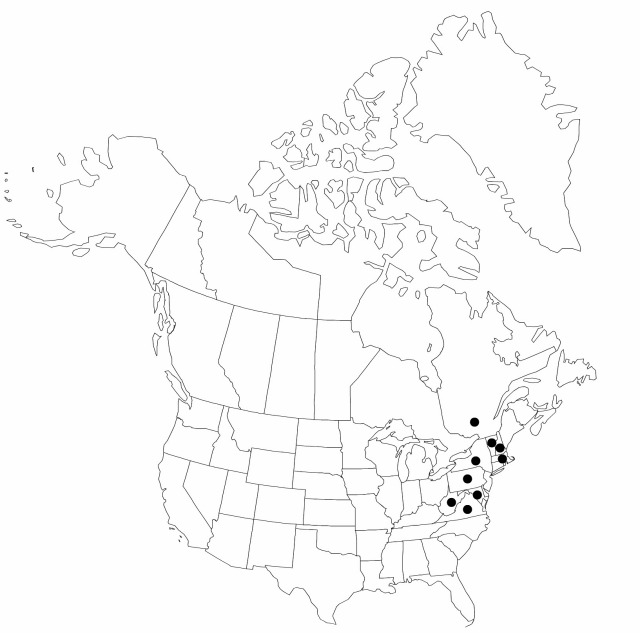Scirpus ancistrochaetus
Rhodora 64: 44, plate 1266, fig. 1. 1962.
Plants cespitose; rhizomes brownish, short, tough, fibrous. Culms: fertile ones upright or reclining; nodes sometimes with axillary bulblets. Leaves 5–9 per culm; sheaths of proximal leaves green to whitish or brown; proximal sheaths and blades with septa many, conspicuous; blades 32–68 cm × 7–13 (–16) mm. Inflorescences terminal, rarely also with 1 lateral inflorescence from distal leaf-axil; rays all arching or sometimes 1 or 2 ascending, distal branches scabrous, proximal branches smooth, rarely scabrellous, rays sometimes with axillary bulblets; bases of involucral-bracts green, margins usually speckled with redbrown, not glutinous. Spikelets in clusters of 2–18 (largest cluster with 8 or more), spikelets sessile, ovoid to narrowly ovoid, 3–5 × 2–3 mm; scales brown or blackish brown with greenish midribs, elliptic, 1.5–2.5 mm, apex slightly mucronate, mucro 0.05–0.1 (–0.2) mm. Flowers: perianth bristles persistent, 6, stout, straight or curved, slightly shorter to slightly longer than achene, with retrorse, thick-walled, sharp-pointed teeth densely arranged in distal 0.6–0.9, enclosed within scales; styles 3-fid. Achenes pale-brown, elliptic to obovate in outline, planoconvex, 1.1–1.7 × 0.6–0.8 mm. 2n = 54.
Phenology: Fruiting late spring–early summer (Jul).
Habitat: Growing in wet depressions, bogs, sinkhole ponds, or adjacent to pools
Elevation: 100–1100 m
Distribution

Que., Md., Mass., N.H., N.Y., Pa., Vt., Va., W.Va.
Discussion
Scirpus ancistrochaetus occasionally hybridizes with S. hattorianus. Scirpus ancistrochaetus once grew in Washington County, New York; it is apparently no longer present in the state.
Scirpus ancistrochaetus is in the Center for Plant Conservation’s National Collection of Endangered Plants.
Selected References
None.
Lower Taxa
"shortened" is not a number.
